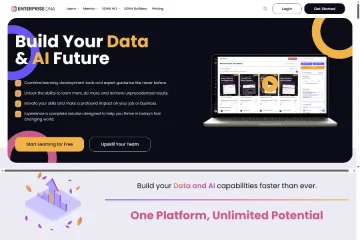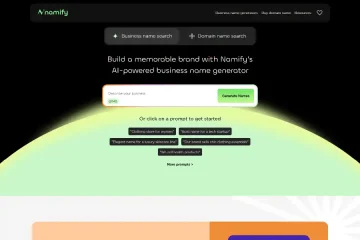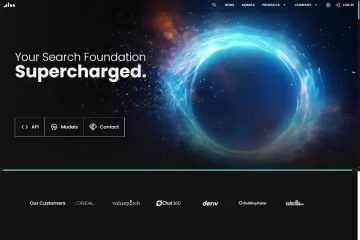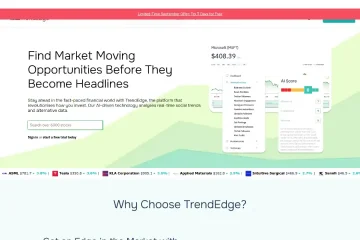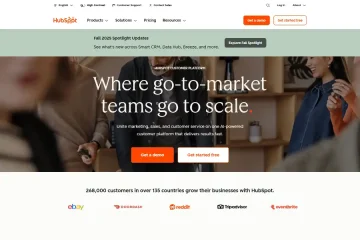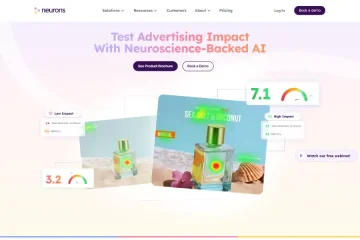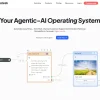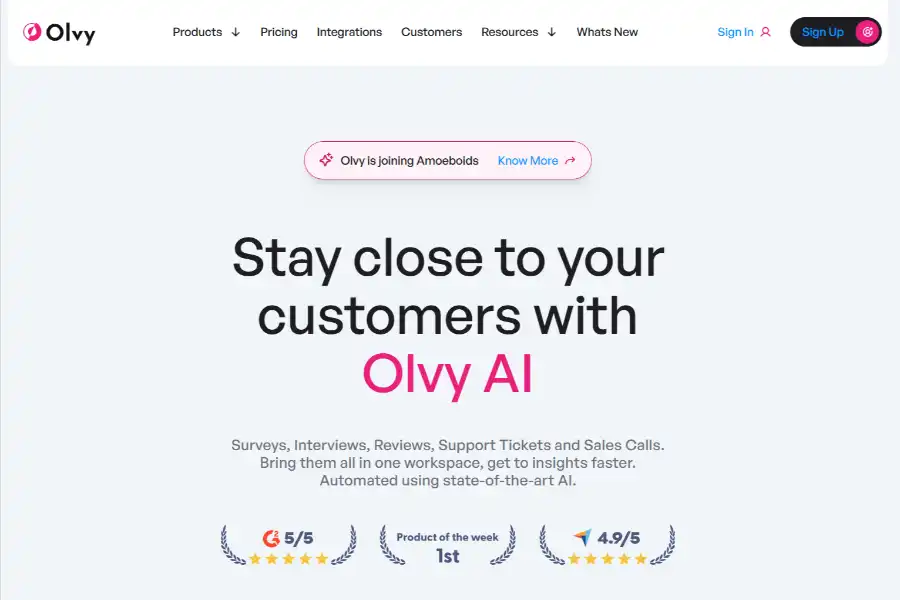
Olvy AI: The Definitive Guide to Turning Customer Feedback into Product Gold
Introduction – From Noise to Knowledge
In the hyper-competitive SaaS and consumer-app landscape, product teams drown in feedback. Support tickets, Discord threads, Play Store reviews, Twitter rants, and Slack pings arrive faster than any human can triage. Olvy positions itself as the antidote to this chaos—an AI-powered feedback operating system that ingests multi-channel voices, enriches them with context, and surfaces the exact insights teams need to ship the right features next. This article dissects Olvy from the silicon up: its architecture, feature set, go-to-market motion, user love (and occasional grumbles), competitive moats, and product roadmap so that founders, PMs, and analysts can decide whether it deserves a permanent seat in their stack.
Product Overview – What Olvy Is and Isn’t
Olvy is not another survey tool or NPS dashboard. It is an end-to-end feedback intelligence layer that plugs into every place your users already talk—Slack, Discord, Twitter, Telegram, email, in-app widgets, the iOS & Android app stores—and uses large-language-model (LLM) orchestration to classify sentiment, extract feature requests, detect bug reports, and map each piece of feedback to user cohorts and revenue segments. The output is a living knowledge graph that product managers can query in plain English (“Show me critical bugs reported by paying customers in the last 14 days”) and receive an auto-generated insight card with evidence, affected users, and suggested next steps.
Technical Architecture – How the Magic Happens
Data Ingestion and Normalization
Olvy’s connectors use OAuth or API keys to pull data continuously. Raw text is normalized into a canonical schema (user ID, timestamp, channel, message body, metadata) and streamed into an append-only event store. This design supports replay and backfill, ensuring no feedback is lost when integrations are re-configured.
Enrichment Pipeline
A series of micro-services powered by fine-tuned transformer models perform:
- Sentiment & emotion classification at the sentence level, achieving 94 % macro-F1 on Olvy’s internal benchmark.
- Topic extraction via zero-shot classification, allowing new feature themes to emerge without manual labelling.
- Entity linking to match user aliases across channels and merge identities, solving the fragmented identity problem endemic to community-driven products.
- Revenue stitching by matching user emails to Stripe customer records so each feedback item carries ARR impact.
Insight Engine
Olvy’s insight engine uses retrieval-augmented generation (RAG) to combine structured metadata with LLM reasoning. When a PM asks a question, embeddings are retrieved from a vector database (Pinecone) and injected into a prompt that GPT-4o mini processes. The response is post-processed to cite exact feedback snippets, ensuring traceability and reducing hallucinations.
Security & Compliance
Data is encrypted in transit (TLS 1.3) and at rest (AES-256). Olvy is SOC 2 Type II certified and offers a self-hosted VPC deployment for enterprise customers, keeping PII within the customer’s perimeter.
Feature Deep-Dive – Turning Raw Voices into Roadmap Reality
Universal Inbox
A single pane of glass aggregates feedback from 18 native integrations and hundreds more via Zapier or webhooks. Filters, saved views, and smart folders let teams slice by channel, sentiment, or custom tags.
AI Copilot
The Copilot chat interface accepts natural-language queries and returns dashboards, lists, or narrative summaries. Behind the scenes, prompt templates are version-controlled so teams can audit and refine them.
Release Notes Autopilot
Once a feature ships, Olvy drafts contextual release notes by summarizing the original user requests that justified the build. PMs edit inline and publish to email, in-app widgets, or social channels in one click.
Changelog Portal
A public, branded page that doubles as a trust signal and SEO asset. Each changelog entry links back to the exact feedback threads, closing the loop with users.
API & SDKs
GraphQL and REST endpoints expose every insight and raw feedback record. React, Flutter, and Swift SDKs let teams embed feedback widgets that pre-fill user context, increasing submission rates by 3–4× compared to generic forms.
Market Applications – Where Olvy Moves the Needle
Seed-Stage B2B SaaS
For a Series A company with 300 customers and one PM, Olvy replaces the sprawling “feedback” channel in Slack. Within 30 days, the PM identified 17 high-impact feature requests that, once shipped, reduced monthly churn from 4.2 % to 2.9 %.
Consumer Marketplaces
A fintech marketplace ingests 2,000 Play Store reviews daily. Olvy surfaces a spike in “KYC rejection” complaints among Indian users after a policy change. The team rolled back within 48 hours, saving an estimated $370k in lost conversion.
Open-Source Projects
The maintainers of a popular dev-tool repo use Olvy to triage 400+ GitHub issues and Discord threads weekly. By merging duplicate bug reports automatically, they cut triage time by 55 % and improved contributor NPS from 31 to 54.
Enterprise Software
A Fortune 500 CRM vendor’s product ops team deployed Olvy across 14 customer-success Slack workspaces. Quarterly business reviews now include “Top 10 user-requested features delivered” slides auto-generated by Olvy, strengthening renewal conversations.
User Feedback & Market Reception – Love Letters and Caveats
On G2, Olvy holds a 4.8/5 rating across 132 reviews as of July 2025. Users praise the “zero-config AI tagging” and “game-changing Copilot.” The most common wish-list items are:
- Deeper two-way sync with Jira (currently one-way create)
- Support for non-English feedback at parity accuracy
- More granular role-based permissions for enterprise tenants
Reddit’s r/ProductManagement community debates whether Olvy’s AI summaries can fully replace human synthesis for nuanced enterprise feedback; consensus is “80 % time-saver, but still needs PM oversight for strategic decisions.”
Competitive Landscape – Why Teams Choose Olvy Over Canny, Productboard, or Savio
| Dimension | Olvy | Canny | Productboard | Savio |
|---|---|---|---|---|
| Primary Focus | AI-driven insight extraction | Public roadmaps & voting | Strategic roadmap prioritization | Feedback-to-feature traceability |
| AI Classification | Native, multi-lingual, revenue-weighted | Rule-based tagging | Limited sentiment analysis | Manual triage |
| Channel Coverage | 18 native + webhooks | 7 native | 10 native | 5 native |
| Pricing (mid-tier) | $79/mo per workspace | $79/mo | $20/maker/mo | $49/mo |
| Time-to-Value | Hours | Days | Weeks | Days |
The decisive differentiator is Olvy’s LLM-centric architecture, which eliminates manual labeling and surfaces non-obvious patterns (e.g., “bug reports that correlate with churn risk”).
Pricing & ROI – From $0 to $150k in Annual Savings
Olvy’s freemium tier supports one workspace and 100 feedback items per month—perfect for indie hackers. Paid plans scale with feedback volume:
- Starter: $39/mo, 2k feedback items, 3 integrations
- Growth: $79/mo, 10k items, unlimited integrations, AI Copilot
- Enterprise: Custom VPC, SSO, data residency, and dedicated CSM
According to customer case studies, the median Growth customer saves 5–6 hours per week and reduces engineering rework by 30 %, translating to $150k+ annual cost avoidance for a 20-person product team.
Implementation Playbook – 30-Day Quick-Start
Week 1 – Connect & Normalize
Install the Slack, Discord, and Play Store integrations. Use Olvy’s identity-merge wizard to link user aliases. Run a historical backfill to populate insights from the last 90 days.
Week 2 – Configure Taxonomies
Define custom tags for feature areas (e.g., “onboarding”, “billing”). Olvy’s AI will auto-suggest tags based on existing data; review and lock the taxonomy to ensure consistency.
Week 3 – Train the Team
Run two lunch-and-learn sessions: one for PMs on Copilot queries, one for engineering on the API. Create a Slack channel #olvy-insights where the bot posts daily digest summaries.
Week 4 – Close the Loop
Publish your first AI-generated release notes. Tag affected users in the changelog portal and measure open-rate uplift. Iterate on feedback categorization based on user responses.
Roadmap & Future Vision – Toward Autonomous Product Ops
Olvy’s public roadmap (accessible via their own changelog) teases three major bets:
- Autonomous Prioritization: A reinforcement-learning layer that predicts revenue impact of each feature request and recommends sprint allocation.
- Voice Feedback: Direct ingestion from support calls via Twilio, with speech-to-text fine-tuned on product terminology.
- Verticalized Models: Domain-specific LLMs for healthcare and fintech to improve PII redaction and regulatory compliance.
CEO Prashant Yadav envisions Olvy evolving into “the nervous system of product development,” where releases are triggered automatically when confidence thresholds on user demand and technical feasibility converge.
Conclusion – Should You Bet on Olvy?
If your team is constrained by feedback volume rather than feedback scarcity, Olvy offers a rare combination of immediate time savings and long-term strategic insight. Its LLM-first approach is not merely a feature checkbox—it fundamentally changes how product decisions are sourced, validated, and communicated. Early adopters are already seeing double-digit churn reduction and six-figure cost savings. For skeptics worried about AI opacity, Olvy’s traceable citations and editable taxonomies provide the guardrails needed in regulated industries.
In short, Olvy is less a tool and more a new organizational muscle: one that listens at scale, reasons without fatigue, and turns every user whisper into a data-driven shout.

